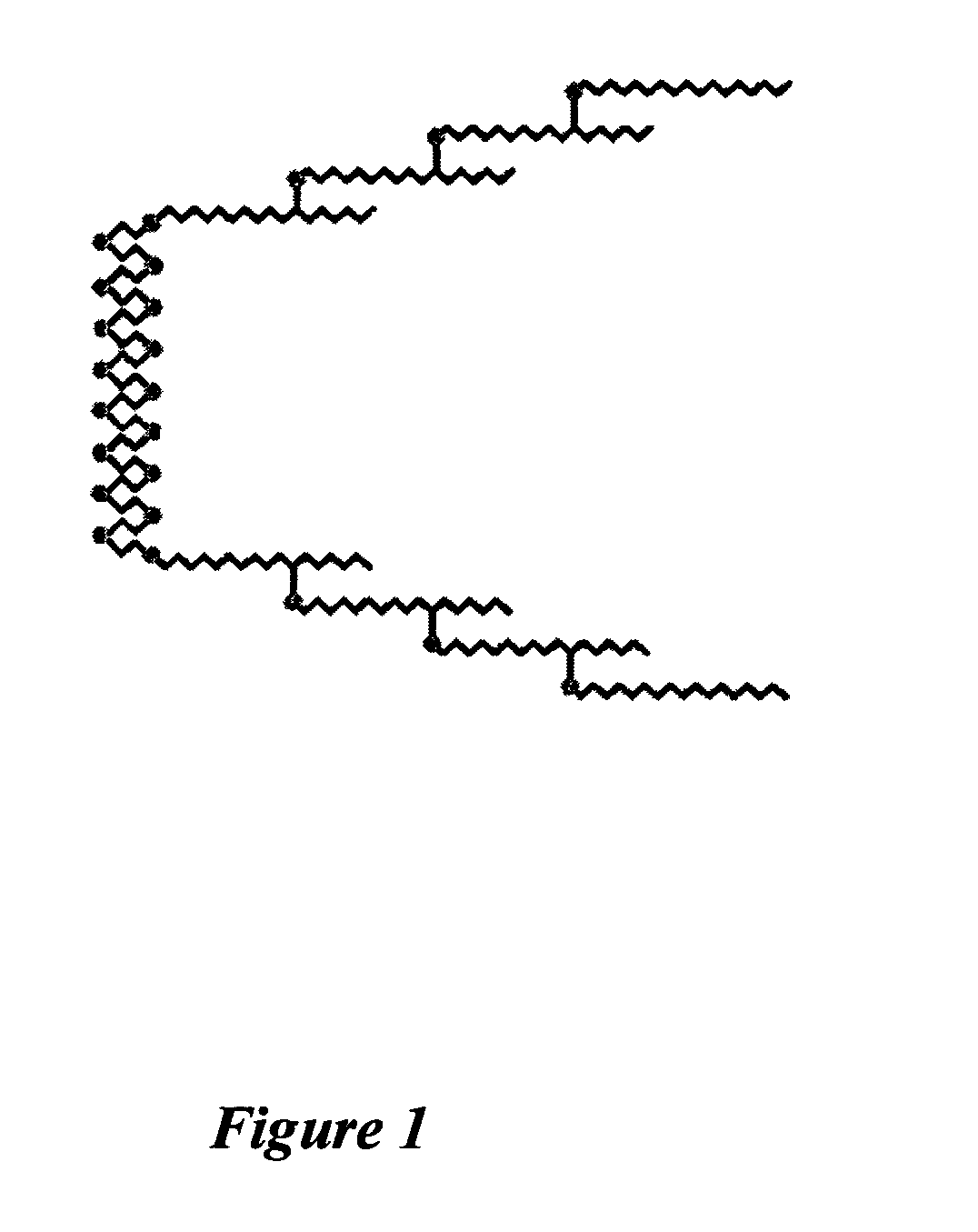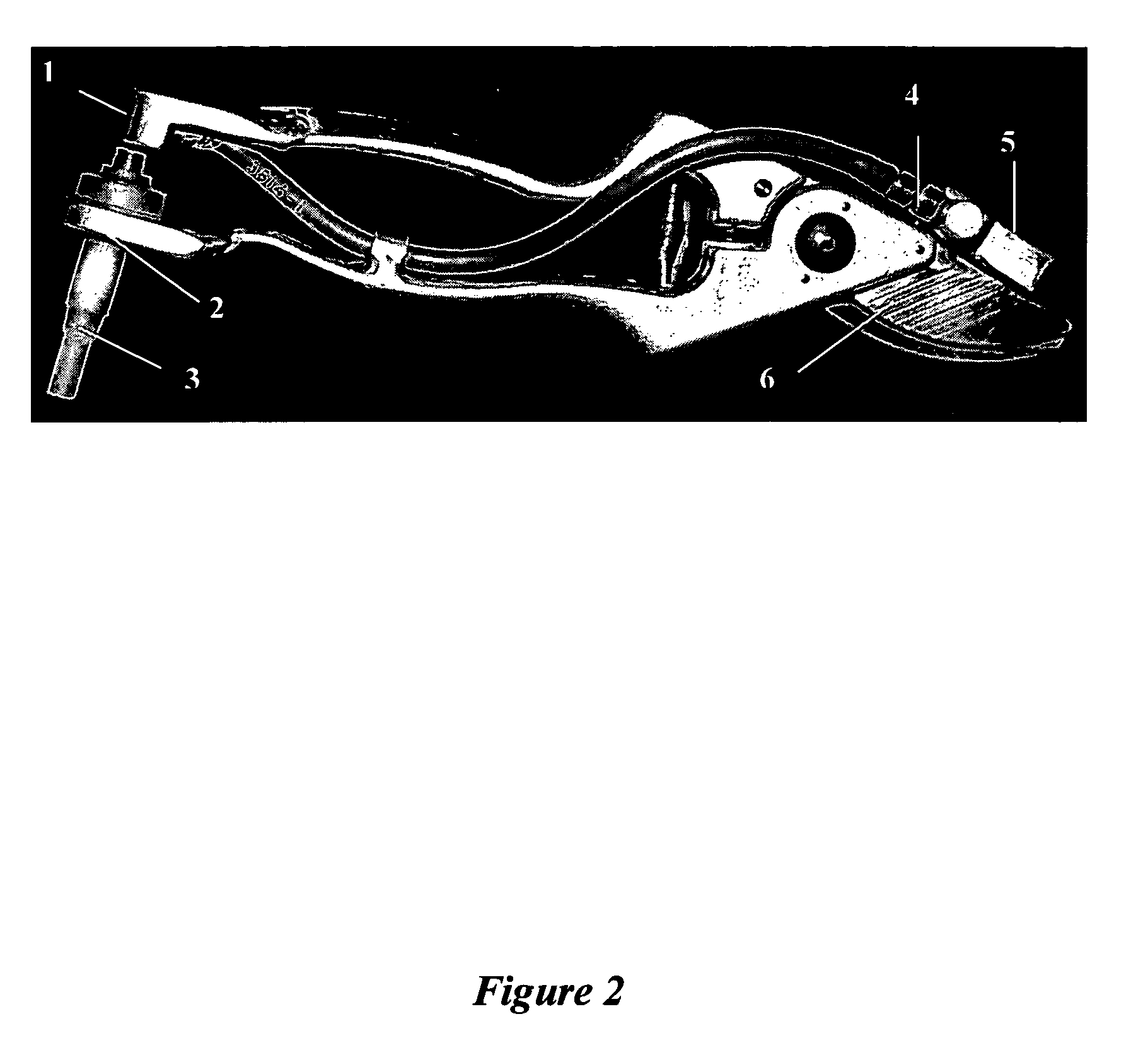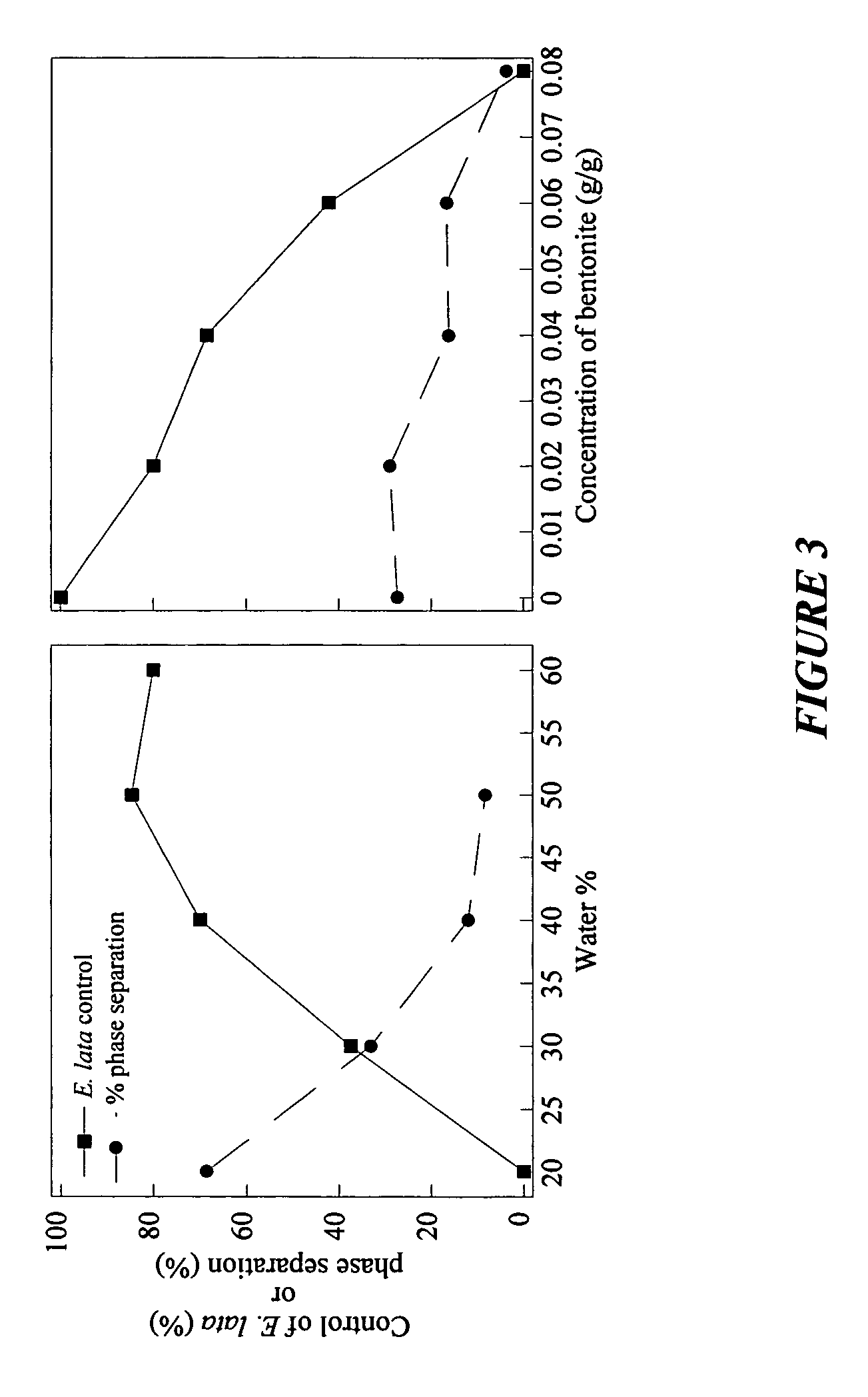Storage stable compositions of biological materials
a biological material and composition technology, applied in the field of new compositions or formulations of biological or cellular materials, can solve the problems of labor-intensive process, eventual death of vines, and reduced yield, and achieve the effect of maintaining activity
- Summary
- Abstract
- Description
- Claims
- Application Information
AI Technical Summary
Benefits of technology
Problems solved by technology
Method used
Image
Examples
example 1
[0081]This example illustrates a composition according to the invention that contains Fusarium lateritium for use in controlling Eutypa lata infection of grapevines.
[0082]F. lateritium and E. lata were maintained in shake flask culture-containing potato dextrose broth (difco) (pdb) at 28° C. and 150 rpm, and on potato dextrose agar (pda) plates at 26° C. Liquid cultures were transferred to new media every 10-14 days.
[0083]A series of water-in-oil emulsions that contained F. lateritium chlamydospores was prepared. The fungus was grown in a medium consisting of onion bulb extract (12 g boiled onion bulb in 1 L ddH2O; 1% w / v) with additional onion plant fibers (10% w / v). Fermentation was carried out for four days at 25° C., pH 4.5 and an agitation rate of 130 rpm, to form the chlamydospores. The oil phase was prepared at least one day prior to formulation by adding from 2 to 14% (w / w) Atlox® 4912 to canola oil. The combined ingredients were maintained at 50° C. for 30 minutes, then sti...
example 2
[0100]This Example illustrates a composition comprising Lagenidium giganteum and its activity in controlling mosquitoes.
[0101]L. giganteum (ATCC 52675) was maintained in both liquid and agar media containing 0.025 g cholesterol, 1.25 g peptone, 1.25 g Ardamine pH (autolyzed yeast extract), 3 g glucose, 0.075 g CaCl2, 0.075 g MgCl2, 3 g corn oil, and 0.1 g soybean lecithin (PYGLC) in one liter of distilled deionized water. Liquid cultures consisted of 75 ml of medium in 250 ml Erlenmeyer flasks maintained in an incubated shaker at 26° C. and 150 rpm. Agar cultures (for long term storage) were maintained at 26° C.
[0102]Aedes aegypti mosquitoes were reared from eggs purchased from Benzon Research (Carlisle, Pa.) and all rearing was completed in a 29° C. incubator. Mosquito eggs were hatched in 500 ml of a 100 mg / l bovine liver powder solution in 15 cm×23 cm×5 cm plastic pans. Each pan contained less than 200 larvae. For each pan, 80-90% of the liquid was decanted and replenished with D...
PUM
| Property | Measurement | Unit |
|---|---|---|
| temperatures | aaaaa | aaaaa |
| w/w | aaaaa | aaaaa |
| diameter | aaaaa | aaaaa |
Abstract
Description
Claims
Application Information
 Login to View More
Login to View More - R&D
- Intellectual Property
- Life Sciences
- Materials
- Tech Scout
- Unparalleled Data Quality
- Higher Quality Content
- 60% Fewer Hallucinations
Browse by: Latest US Patents, China's latest patents, Technical Efficacy Thesaurus, Application Domain, Technology Topic, Popular Technical Reports.
© 2025 PatSnap. All rights reserved.Legal|Privacy policy|Modern Slavery Act Transparency Statement|Sitemap|About US| Contact US: help@patsnap.com



